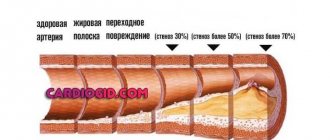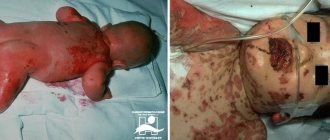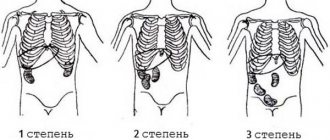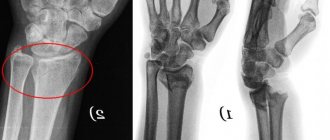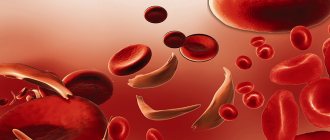Fibroma: origin and essence of the disease
The causes of dermatofibroma and other forms of this type of tumor are not known. Some researchers believe that fibroids can form as a localized tissue reaction after minor trauma. Sometimes fibroids can have a genetic component, especially in people of Northern European descent. Some medications, including beta blockers, have been reported to cause changes in fibrous tissue. In addition, some fibroids may be influenced by hormonal imbalances or pathologies of endocrine organs, including problems with the thyroid and pancreas.
Hyperhidrosis (increased sweating), inflammatory processes on the skin, especially chronic ones, as well as the influence of prolonged UV radiation, poor nutrition and bad habits can have a certain impact.
Prevention
There is no special prevention for the appearance of fibroids. However, you can reduce the risk of tumor formation through a healthy lifestyle: playing sports, giving up bad habits, taking vitamin and mineral complexes and a balanced diet. A diet rich in dairy products, fruits, vegetables, seaweed and natural spices is believed to promote fibroid-free skin. Especially for skin patients, it is recommended to eat viburnum, apples, tomatoes and cucumbers. But salt consumption should be significantly reduced.
A fibroid is often confused with a mole, but they are not the same thing. How to identify a malignant mole is described in detail in this article.
Signs and symptoms
Fibroids are classified as benign formations. They form a tumor-like growth of tissue, inside of which there is mainly fibrous (or connective) tissue. Signs of fibroids arise as a result of uncontrolled by the body, but slow and limited growth of a certain area of tissue. Rarely fibroids are malignant, and the reasons for this are trauma and malignancy of the formation. Different types of fibroids can develop anywhere, and if they are small in size, they require active monitoring or removal if they cause discomfort.
Some women with uterine fibroids have no or only mild symptoms, while other women have more severe, debilitating symptoms. Common symptoms of a tumor include:
- heavy or prolonged menstrual flow;
- abnormal bleeding between periods;
- pain in the pelvic area;
- frequent urination;
- lumbago;
- pain during intercourse;
- infertility.
Common symptoms of dermatofibroma involve discomfort and may come and go. Symptoms of dermatofibroma are not severe and include:
- color change over time;
- itching;
- periodic swelling over the tumor;
- possible bleeding due to injury;
- sensitivity of dermatofibroma to touch;
- a small bump with a raised surface.
Symptoms of plantar fibroma are not severe and include:
- expansion of sizes over time;
- hard lump in the arch of the foot;
- pain when pressing, standing or walking;
- spread of additional fibroids over time.
Reasons for development
The causes of uterine fibroid tumors have not been precisely formulated, but a connection between its occurrence and hormonal fluctuations and heredity has been noted.
Thus, girls before puberty and menopausal women do not suffer from fibroma, and if it was detected in the latter, it probably existed before menopause and was asymptomatic. During pregnancy, tumor growth may increase, and after childbirth, the fibroid returns to its original size. This fact also indicates the undoubted role of hormones in the female body in the development of the disease.
Predisposing factors include:
- Late development of menstrual function;
- Frequent abortions and intrauterine manipulations;
- No births by age 30;
- Long-term and uncontrolled use of hormonal contraceptives containing an estrogen component;
- Chronic inflammatory diseases of the reproductive tract;
- Pathology of other organs – obesity, diabetes, hypertension, etc.
Typically, fibroma grows in the form of a single dense node - a nodular form of the tumor, although diffuse growth in the thickness of the uterine wall is also possible. The size ranges from a few millimeters to 2-3 cm, but can be larger - up to 20 cm in diameter.
Types, characteristics of fibroids
There are more than 10 different morphological variants. Pathologists give a description of what each form looks like and how it differs after histological examination - elastrophibroma, soft, dense fibroma.
- Dermatofibroma is a single or multiple formation of intradermal localization, mobile and painless when palpated with unchanged color.
- Desmoid fibroma has another name - aggressive fibrosis, refers to mesenchymal tumors originating from excess collagen fibers and differentiated fibroblasts. They often progress and recur, forming in soft tissues, the retroperitoneum or on the abdominal wall.
- Chondriomyxomas are rare tumors that affect bone tissue - the edges of long bones, pelvis, ribs, vertebrae, feet, metatarsus.
- Angiofibriomas in the cheek and nose area, containing small tubercles with connective tissue fibers.
Classification
Based on the location of the node, the following options are distinguished:
- Submucosal, or submucosal - grows from the myometrium towards the uterine cavity;
- Interstitial, or intramural - localized exclusively in the thickness of the muscle layer;
- Subserous – reaches the outer lining of the uterus;
- Intraligamentous – located between the ligaments of the uterus.
Fibroids of the body and cervix are especially distinguished. The latter require mandatory removal during reproductive age, as they interfere with conception and gestation and can interfere with natural childbirth.
Peduncular fibromyoma deserves special attention. Such a tumor is located outside the uterus and is connected to it only by a thin stalk. It is a type of subserous fibroma. During the initial examination, it may be mistaken for an enlarged ovary or a tumor of the appendages.
In rare cases, examination reveals another type of subserous fibroid - parasitic. The node is attached to neighboring organs and receives nutrition from them. Diagnosis is difficult due to the atypical clinical picture. Often, laparoscopy, CT or MRI are required to identify such a tumor.
The following types of uterine fibroids are distinguished by size:
- Clinically insignificant – up to 2 cm;
- Small sizes - up to 2.5 cm or 5 weeks (relative to the enlargement of the uterus);
- Medium size - up to 5 cm or 12 weeks;
- Large sizes - more than 5 cm or 12 weeks.
You can see what uterine fibroids look like in the photo.
Diagnostics
Initially, experienced specialists - oncologists or multidisciplinary surgeons - conduct a detailed examination of the patient, record all the complaints that exist, palpate the formation and make a preliminary diagnosis. Then you need to determine the nature of the tumor. After this, you need to conduct an ultrasound examination of the tissues where the tumor is located to determine its size, nature, and changes in the tissues. If necessary, an X-ray examination is performed. If questions remain, a biopsy of the suspicious area should be performed to rule out a malignant process.
Fibroids can be detected by palpation (feeling with fingers or hands) performed as part of a pelvic examination, or diagnosed through imaging procedures such as ultrasound, computed tomography (CT), and magnetic resonance imaging (MRI).
Diagnostic measures
The similarity with other formations and the multiplicity of types makes it difficult to diagnose fibroids, and without the participation of a specialist makes it almost impossible. The first to examine the tumor is a therapist, who, depending on the location of the tumor, is assisted by highly specialized specialists (dermatologist, dentist, gynecologist, orthopedist, endocrinologist, etc.).
At the preliminary stage of diagnosing fibroma, the patient’s medical history, his living conditions, previous diseases and injuries are studied. This allows the doctor to determine the etiological factors of the pathology.
Based on a patient interview, information is obtained about the time of tumor appearance, previous events and the behavior of the pathology in the future.
Then they begin laboratory diagnostics. This includes:
- general blood and urine tests;
- blood chemistry;
- tumor marker test;
- smear of the oral mucosa.
In women, a vaginal smear is examined.
The final diagnosis is obtained based on modern methods of studying tumors using special equipment:
- Ultrasound;
- CT;
- MRI;
- mammography;
- endoscopic biopsy;
- radiovisiography;
- orthopantomograms.
Reliable information about the type, nature and possible consequences allows doctors to determine the optimal treatment methods for connective tissue tumors.
Treatment methods
Dermatofibromas are harmless and treatment is not required unless there are warning signs or cosmetic concerns. If the patient wishes to remove dermatofibroma, surgical treatment is possible - surgery . It is important to evaluate its consequences: the scarring and tissue changes that occur after surgical excision may look worse than the original lump.
For plantar fibroids, non-surgical treatment options are preferred because the surgical procedure requires a long recovery period and can lead to complications that may be worse than the plantar fibroids themselves. Non-invasive treatments for plantar fibroids include:
- extreme cold or cryodestruction to reduce fibroids.
- pads or insoles to relieve discomfort when wearing shoes.
- stretching.
Most doctors agree that for severe cases of plantar fibroma, the smartest option is to resort to invasive treatments and surgery. Invasive treatments for plantar fibroids include:
- injections of corticosteroids into fibroids.
- surgical removal of the entire plantar fascia (which is associated with a long recovery period and a high risk of developing other foot problems).
- surgical removal of fibroids (with a high recurrence rate).
Treatment is indicated when dermatofibromas are bothersome or persistently irritated. In these cases, surgical removal and freezing with liquid nitrogen can be performed.
Treatment for uterine fibroids depends on the size, symptoms, and other factors. Asymptomatic fibroids may not require treatment. A myomectomy (surgical removal of uterine fibroids) may be performed to remove fibroids that are interfering with fertility in women who want to become pregnant. Hysterectomy (surgical removal of the uterus) is also commonly performed on patients with severe symptoms of uterine fibroids, but is not an option for women planning a pregnancy. Non-surgical treatment for uterine fibroids includes medications, uterine artery embolization and targeted ultrasound treatment.
What complications can there be?
Large formations can lead to compression of the nerve endings of neighboring organs. Other complications of fibroids include:
- Partial or complete necrosis of the neoplasm. Leads to severe intoxication of the body. Characterized by intense pain and fever.
- Pinching or bending of the fibroid leg.
- Inversion of the uterus.
- Suppuration or infection of fibromatous formation.
- Rupture of tumor vessels is rare. Leads to intraperitoneal bleeding.
If a woman does not see a doctor for a long time, the risk of developing severe anemia increases. This condition not only leads to rapid fatigue and loss of performance, but can also be fatal.
Predictions of why fibroids are dangerous
Dermatofibroma has no serious complications. Complications of plantar fibroids usually occur as a result of surgical interventions. These include flattening of the arch of the foot, postoperative nerve entrapment, and postoperative growth of larger and recurrent fibromas.
Article sources:
- Desmoid fibroma. Staged, organ-preserving surgical treatment. Khvastunov R.A., Mozgovoy P.V., Lukovskova A.A., Yusifova A.A. Volgograd scientific and medical journal No. 2, 2021. p. 54-57
- https://www.ncbi.nlm.nih.gov/pmc/articles/PMC2927520/ Central odontogenic fibroma: a case report with long-term follow-up. Marco T Brazão-Silva, Alexandre V Fernandes, Antônio F Durighetto-Júnior, Sérgio V Cardoso, Adriano M Loyolacorresponding
- https://www.ncbi.nlm.nih.gov/pmc/articles/PMC3351722/ Literature survey on epidemiology and pathology of cardiac fibroma. SuguruTorimitsu, Tetsuo Nemoto, Megumi Wakayama, Yoichiro Okubo, Tomoyuki Yokose, Kanako Kitahara, Tsukasa Ozawa, Haruo Nakayama, Minoru Shinozaki, Daisuke Sasai, Takao Ishiwatari, Kensuke Takuma, Kazutoshi Shibuya
The information in this article is provided for reference purposes and does not replace advice from a qualified professional. Don't self-medicate! At the first signs of illness, you should consult a doctor.
Prognosis after removal
Modern medicine has effective methods and means to combat benign tumors. With a timely and professional approach, the prognosis after fibroid removal is in most cases favorable. Relapses of the pathology are observed in no more than 5% of patients. To minimize the risk of complications and prevent recurrence of the disease, after surgery you should strictly follow the doctor’s instructions and adhere to the rules of prevention.
List of sources
- Vershinina S.A. Breast diseases, modern methods of treatment / S.A. Vershinina, E.V. Potyanina. - M.: Vector, - 2021, - 223 p.
- Chissov V.I., Daryalova S.L. Desmoid fibromas. In the book: Chissov V.I., Daryalova S.L., eds. Clinical recommendations. Oncology. M.: GEOTAR-Media; 2009:791-810.
- Kovalev D.V., Koposov P.V. Aggressive fibromatosis: current state of the problem // Annals of Surgery. Hepatology 2002. No. 4. P. 13-16.
- Novikova O.V. Sexual hubbub in the etiology, pathogenesis and treatment of desmoid fibromas: Diss. ...Dr. med. Sci. M.; 2008:197-199.
Forecast
With radical surgery to remove fibroids, the prognosis is favorable. For fibroids of the desmoid type in cases of combination therapy (surgical removal and radiation therapy or chemo-hormonal therapy), the prognosis is relatively favorable, since relapses are detected in 10-15% of patients within 2-3 years. Death is a relatively rare occurrence, mainly when the desmoid tumor is localized in vital organs (chest, head, abdomen).
Home remedy for fibroids
How to get rid of fibroids at home? The most popular home remedy for fibroids: apple cider vinegar.
Apple cider vinegar for fibroids is an extremely common and popular treatment for fibroids. But is it effective? Apple cider vinegar is applied to the fibroid with a cotton swab or cloth for a few seconds. This operation should be repeated until the unwanted lesion dries out, which should fall off over time.
It is worth remembering that home remedies for fibroids are not the only solution. A safer idea than removing fibroids at home is to go to a dermatologist and consult with him about the skin lesions that are bothering us.




